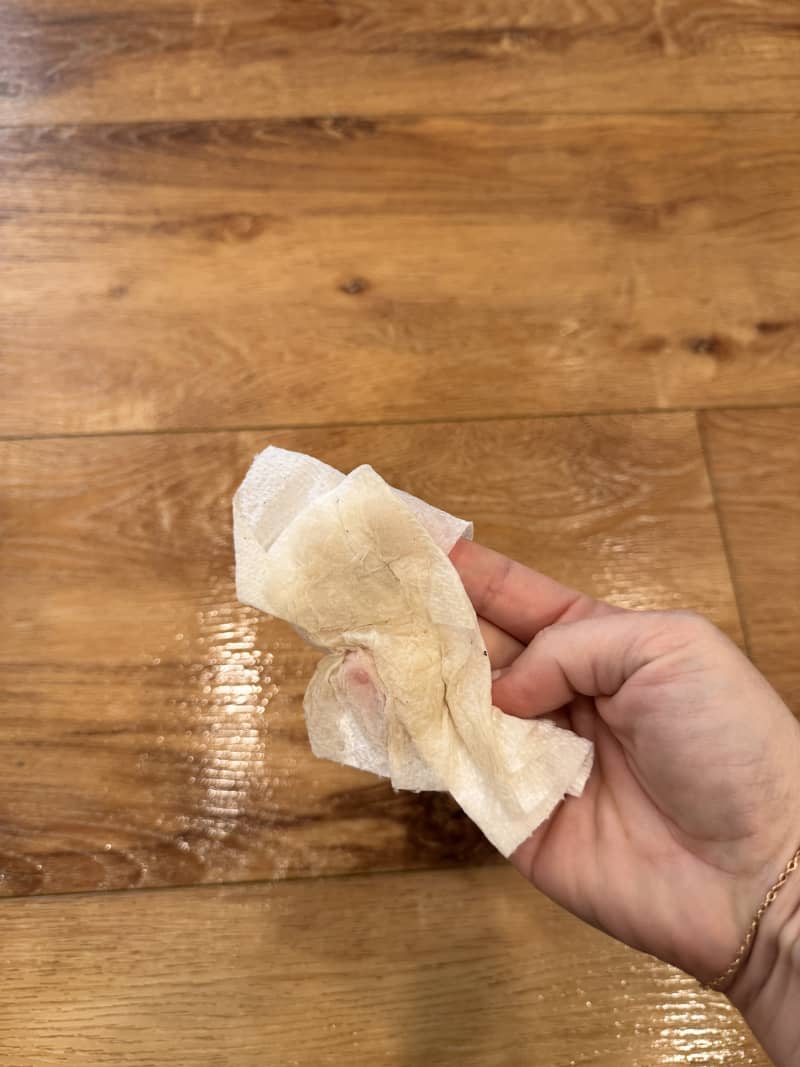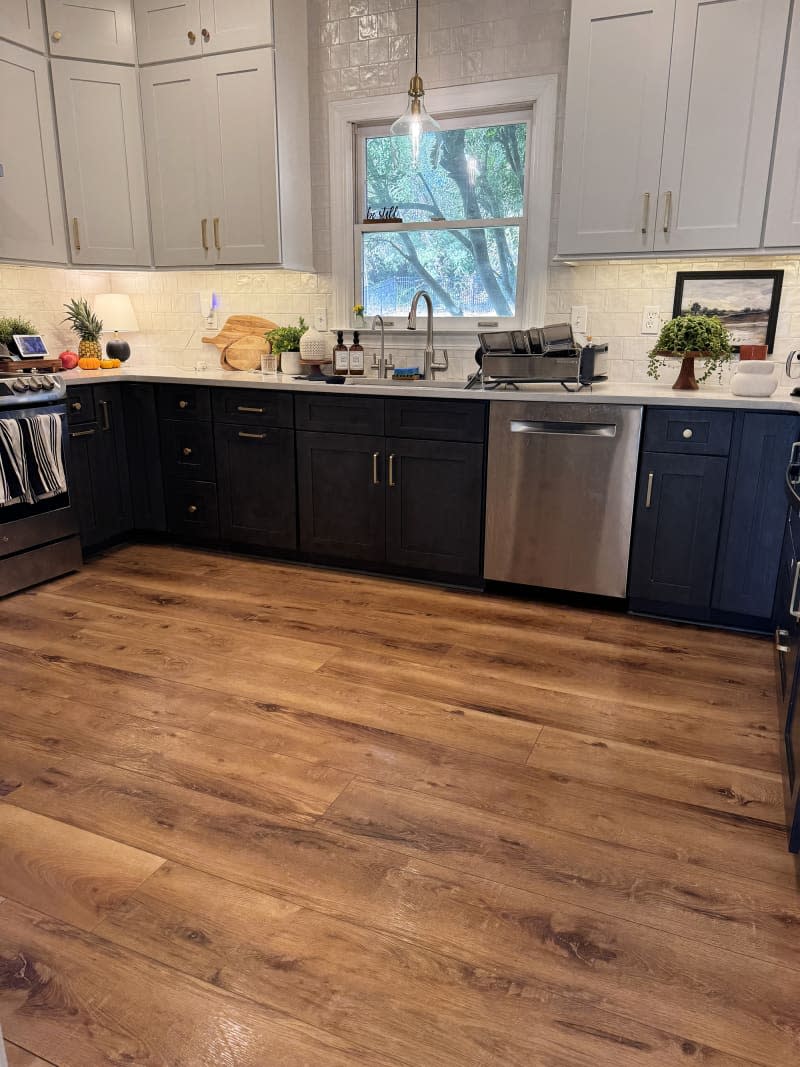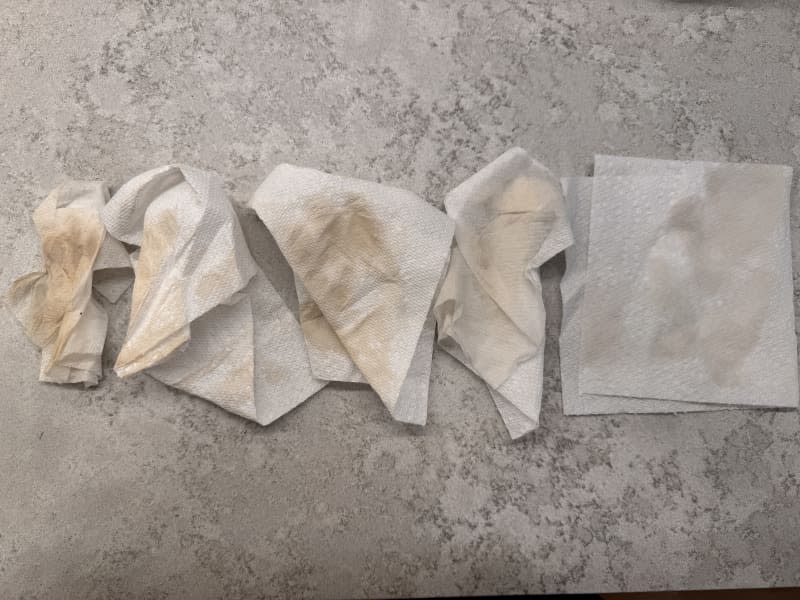I Tried the Viral “White Towel Test” on My Kitchen Floors, and *Yikes*

For years, there’s been a running joke in my family about the cleanliness of my floors. At some point after I started having kids, I asked my sister if my house seemed as clean as it was before I had children. Her response? “Your floors aren’t what they used to be.” I burst into incredulous laughter. She didn’t mean it in an unkind way, and I did ask for her opinion, after all. But ever since she shared her honest thoughts (and the profuse apologies that followed), I’ve teased her about my “dirty” floors.
The thing is, they aren’t as clean as they used to be. Before having five kids and a couple of dogs, the house was naturally cleaner, and I had more time to mop. Although I do vacuum almost daily, I no longer have babies crawling around on the floor, and sometimes I skip wet mopping for a few weeks. (No judgment, right?). But when I do get around to wet mopping, I’m always chagrined by how dirty the mop water is when I pour it out. My O-Cedar Spin Mop helps by separating clean and dirty water, but I still feel like the floors aren’t as clean as they could be after one mopping session.
That’s why when I saw this video from third-generation janitor and cleaning influencer Brandon Pleshek of @cleanthatup doing a clean floor test, I knew I had to try it (despite my fears). He used a white microfiber cloth wiped on a small section of floor — dubbing it the “White Towel Test” — to see if there was still dirt after he mopped. I already knew that my kitchen floor wasn’t as clean as I wanted it to be, but this gave me the nudge I needed to get it there.

I got to work. First, I decided to only do the “working square” of my kitchen floor space, leaving the eat-in area for another time. I pulled up my floor mats and vacuumed thoroughly with my cordless Dyson, then got out my O-Cedar Spin Mop, made my bleach and powdered Tide solution with hot water, and got to work.
So, What Happened When I Tried the “White Towel Test”?
To perform the “white towel test,” I used paper towels, wetting one and rubbing it on the floor before starting to mop, then wiping the damp floors with the towels after each of four mopping sessions. I saw a noticeable improvement in each successive paper towel, and after a whopping four mopping sessions, I felt like my floor was sufficiently clean. (I do think there’s some dye on my vinyl planking floors that must have come up because there was an orange-ish tint to the dirt I picked up and it seems like that was all that was left by the time I got to the fourth mopping.)

Now that my floor is as clean as I could hope for, I plan to mop more frequently than every few weeks. This way, theoretically, the floors won’t have a chance to get as dirty as they were before this little experiment. In any case, the exercise was a great reset for the floors that get the most use out of the whole house, and I’m glad to have a way to measure my success — no matter how nasty it was. Now it’s your turn!
Have you tried the “White Towel Test”? Let us know how it went in the comments below!

